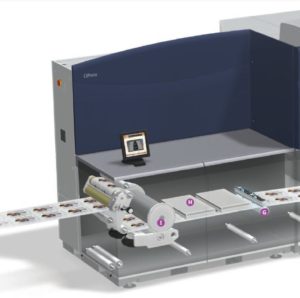Written by Howard Fenton
Senior Technology Consultant, NAPL
 A few weeks ago, a new show model was introduced at the Inkjet Summit. This show brought together industry consultants, potential buyers and suppliers to share experience and ideas in an open forum which included presentations, case histories, and one-on-one meetings. Another interesting aspect of the show was the after-show communications which included a new LinkedIn forum, as well as a special section that will be part of an upcoming Printing Impressions.
A few weeks ago, a new show model was introduced at the Inkjet Summit. This show brought together industry consultants, potential buyers and suppliers to share experience and ideas in an open forum which included presentations, case histories, and one-on-one meetings. Another interesting aspect of the show was the after-show communications which included a new LinkedIn forum, as well as a special section that will be part of an upcoming Printing Impressions.
One of the first conversations to emerge on the LinkedIn forum focused on paper choices, paper vendors, and paper production issues. This is because the choice of paper is more critical in inkjet production than it is in offset or electrophotographic printing. In fact, we talked about this in one of the opening sessions when we discussed the three critical components of the technology which are the inkjet heads, the ink, and paper.
One of the messages we heard from many experienced users was the need to create
their own paper testing processes. Included in this process are: selecting appropriate test images, printing metrics, subjective evaluations, and an approval criteria. This is very similar to what GATF and RIT have done in the past with new printing technologies or new paper certification programs. Generally you start by creating test targets with specific images that are sensitive to the unique issues of the different print technology and presses and combine that with the specific applications printed by that company. This becomes the “test suite.”
Once you create the test suite, you need to create the evaluation process which includes both objective measures and subjective opinions. That means using an instrument such as a spectro-densitometer and identifying people as your image quality judges.
The identification of metrics and the approval criteria emerges once you start comparing different papers, different measures, and different opinions. It doesn’t take long before you learn what is acceptable and what is not and then identify your upper and lower control limits of your metrics. This becomes the paper testing process which can evolve into a standard operating procedure, a statistical process control program, or even Six Sigma implementation of quality.
We are already seeing paper manufacturers offering to help in the selection and identification processes. If inkjet production printing continues to grow, we will see more and better paper choices come to market and the need for testing may decline.
If you are utilizing inkjet technology today, do you have a paper testing process in place? What have you found works well and what criteria do you test for?
Looking for similar topics? Check out these other Digital Printing Hotspot Blog posts:
- Evolving, Transferrable Impressions – Carbonless Paper
- Custom Media Solutions – Making the Output Look Easy
- Craving Offline Experiences: In Today’s Digital World, Do you Turn to the Physical and Tactile?
- Promoting Value of Print: Communication that is Environmentally and Socially Responsible
- What Would NASA Use? – A paper that can take it!
_____
Howie Fenton is a consultant and business advisor at NAPL as well as a paid contributor to this blog. Howie advises commercial printers and in-plants on benchmarking performance against industry leaders, increasing productivity, and adding digital and value services through customer research. For more information click here.


